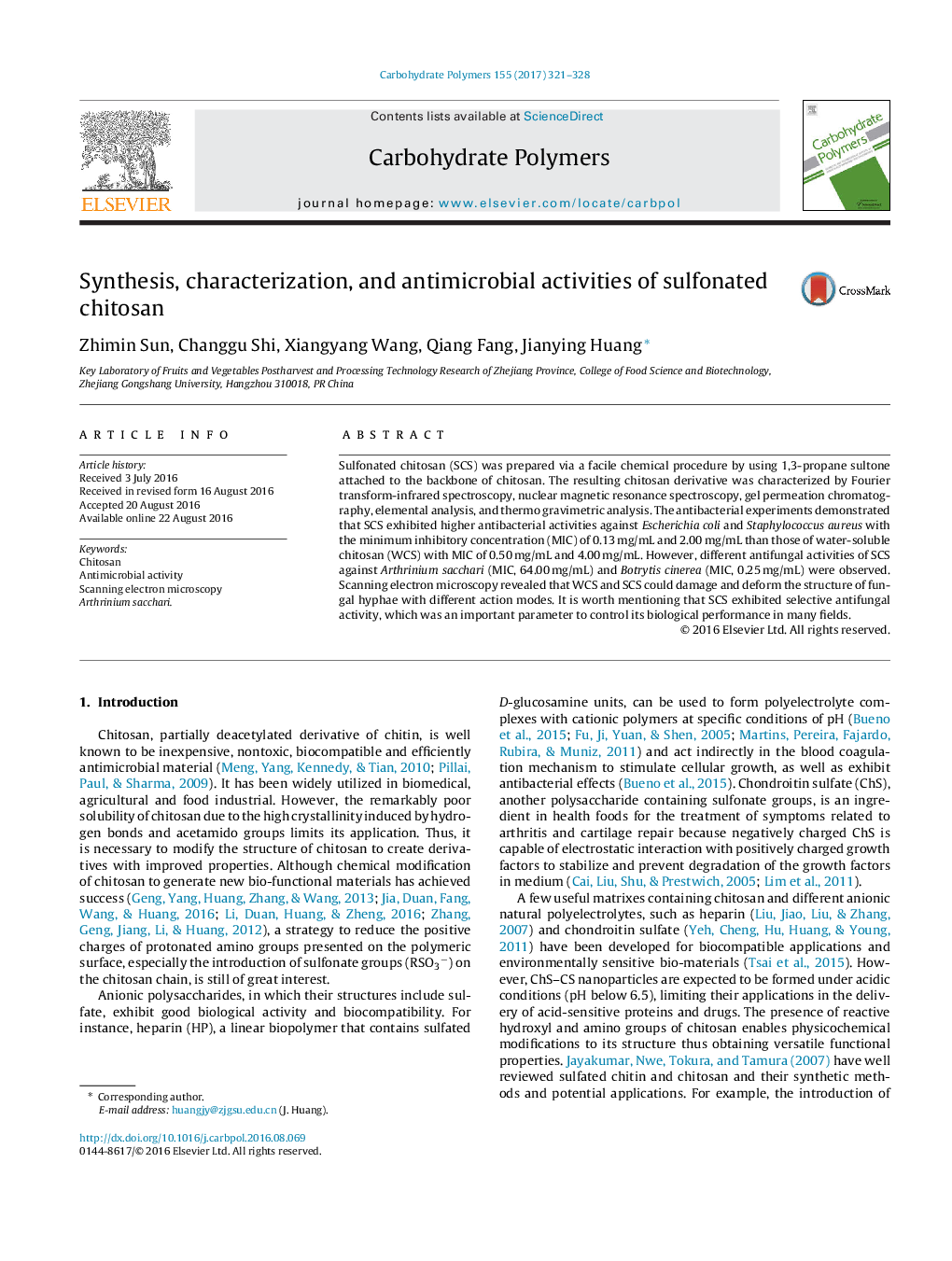| Article ID | Journal | Published Year | Pages | File Type |
|---|---|---|---|---|
| 1384594 | Carbohydrate Polymers | 2017 | 8 Pages |
•A strategy to introduce the sulfonate groups (RSO3−) on the chitosan chain has been developed.•The resulting polymer was characterized and its antimicrobial activities were investigated.•The effect of fungal inhibition was chitsoan type- and fungi-dependent.•Sulfonated chitosan exhibited selective antimicrobial activity.
Sulfonated chitosan (SCS) was prepared via a facile chemical procedure by using 1,3-propane sultone attached to the backbone of chitosan. The resulting chitosan derivative was characterized by Fourier transform-infrared spectroscopy, nuclear magnetic resonance spectroscopy, gel permeation chromatography, elemental analysis, and thermo gravimetric analysis. The antibacterial experiments demonstrated that SCS exhibited higher antibacterial activities against Escherichia coli and Staphylococcus aureus with the minimum inhibitory concentration (MIC) of 0.13 mg/mL and 2.00 mg/mL than those of water-soluble chitosan (WCS) with MIC of 0.50 mg/mL and 4.00 mg/mL. However, different antifungal activities of SCS against Arthrinium sacchari (MIC, 64.00 mg/mL) and Botrytis cinerea (MIC, 0.25 mg/mL) were observed. Scanning electron microscopy revealed that WCS and SCS could damage and deform the structure of fungal hyphae with different action modes. It is worth mentioning that SCS exhibited selective antifungal activity, which was an important parameter to control its biological performance in many fields.
